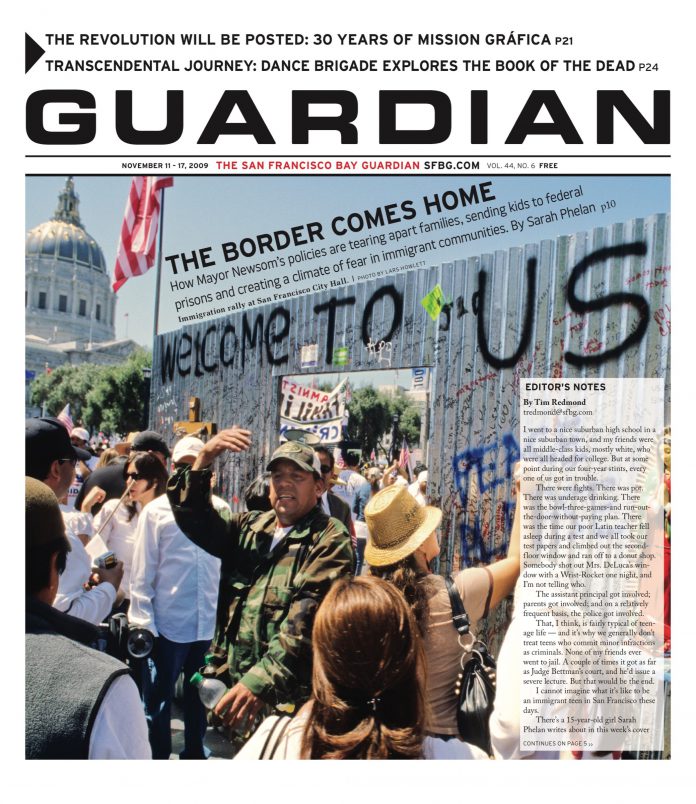news@sfbg.com
The HIV/AIDS support community celebrated when President Barack Obama recently lifted the 22-year long U.S. travel ban against people infected with HIV. But officials say the federal government is still deaf to local needs and not making the best use of scarce resources.
The U.S. Conference on AIDS, held Oct. 29-31 at the Hilton San Francisco Hotel, attracted more than 3,000 AIDS treatment and prevention professionals and emphasized the unmet needs of the most at-risk communities.
"By extending the Ryan White Care Program and by lifting the ban, Obama has made a lot of people very happy," said Ravinia Hayes-Cozier, director of government relations and public policy for the National Minority AIDS Council, which sponsored the conference. "But we have to continue to do things differently here, to do things better, and to let the rest of the country know about the epidemic that is in all of our communities."
According to the Centers for Disease Control and Prevention (CDC), more than 56,000 Americans become infected with HIV each year — one every nine-and-a-half minutes — and more than 1 million people living with HIV in the U.S.
Despite these figures, community workers said little movement has been seen on the domestic side in the last eight years and that federal funding often fails to fund the full range of services people need.
"The CDC wants to see deliverable results in the fight against AIDS, which is understandable," said Alfred Forbes, a holistic consultant who led a workshop at the conference on how support and quality of life services have been neglected. "But I believe it has come to the point where we have missed our missions. A lot of organizations are more in touch with the federal funding in their pockets than their own communities."
While Obama’s 2010 budget request includes an estimated $25.8 billion for HIV/AIDS activities, only 4 percent of that is allocated toward domestic HIV prevention, thanks to the emphasis on more traditional care services.
"In the early days of epidemic, most of the work was done by the community, and we would try everything," said Karl Knapper, a program manager at the SF-based nonprofit Shanti. "But while it’s easy to look at results for providing care for people with HIV and AIDS, preventing it is very hard to prove — it’s like trying to prove a negative."
An organization that understands this problem well is the San Francisco AIDS Foundation, an agency that offers one of the oldest syringe exchange services in the country, a program banned from receiving federal funds.
"There is proof this program is saving lives. Before these services were available, 16 to 19 percent of new HIV-infections were caused by sharing syringes. But now in San Francisco, less than 1 percent of new infections are caused this way," said interim vice president of programs and services Keith Hocking.
Of the 28,114 cumulative AIDS cases in San Francisco at the end of 2008, 94 percent were male, 4 percent were female, and 1 percent were transgender persons. Seventy percent of male AIDS cases were among men who have sex with men.
Yet when a San Francisco group working to prevent HIV transmission among all gay and bisexual men created what it thought was a powerful publicity campaign five years ago, it got vilified in Congress and lost its federal funding. "We produced materials that we thought were appropriate for our constituents, and it was a disaster," said Kyriell Noon, executive director of the STOP AIDS Project. "They called it pornography and indecent. But to be perfectly honest, community norms when talking about sex are different in gay and bisexual communities.
"We have to meet the community if we are going to have any effect on the epidemic," Noon continued. "But there is a real disconnect between what we know is effective and what the government wants to fund."
The federally funded Ryan White Program, which covers underinsured individuals living with HIV/AIDS, got $2.3 billion this fiscal year, a $54 million increase over last year. While the CDC has increased funds for HIV prevention by the same amount, many community-based organizations must rely on the San Francisco Department of Public Health to fund less traditional services.
In July of this year, SFDPH allocated $11.5 million for HIV prevention, with $5 million coming from city and state funds. Dr. Grant Colfax, director of HIV Prevention and Research at SFPDH, said community partnership is crucial when tackling the disease.
"We work closely with the community planning council and base our priorities on what communities want and need," he said. "But I really do think it’s progressive to be able to hold ourselves accountable for the preventive methods we use. We do have to show it works."
"There are lots of different opportunities for funding, but we can’t afford to fund everyone," said CDC spokesperson Nikki Kay. "Community-based organizations must apply competitively."

